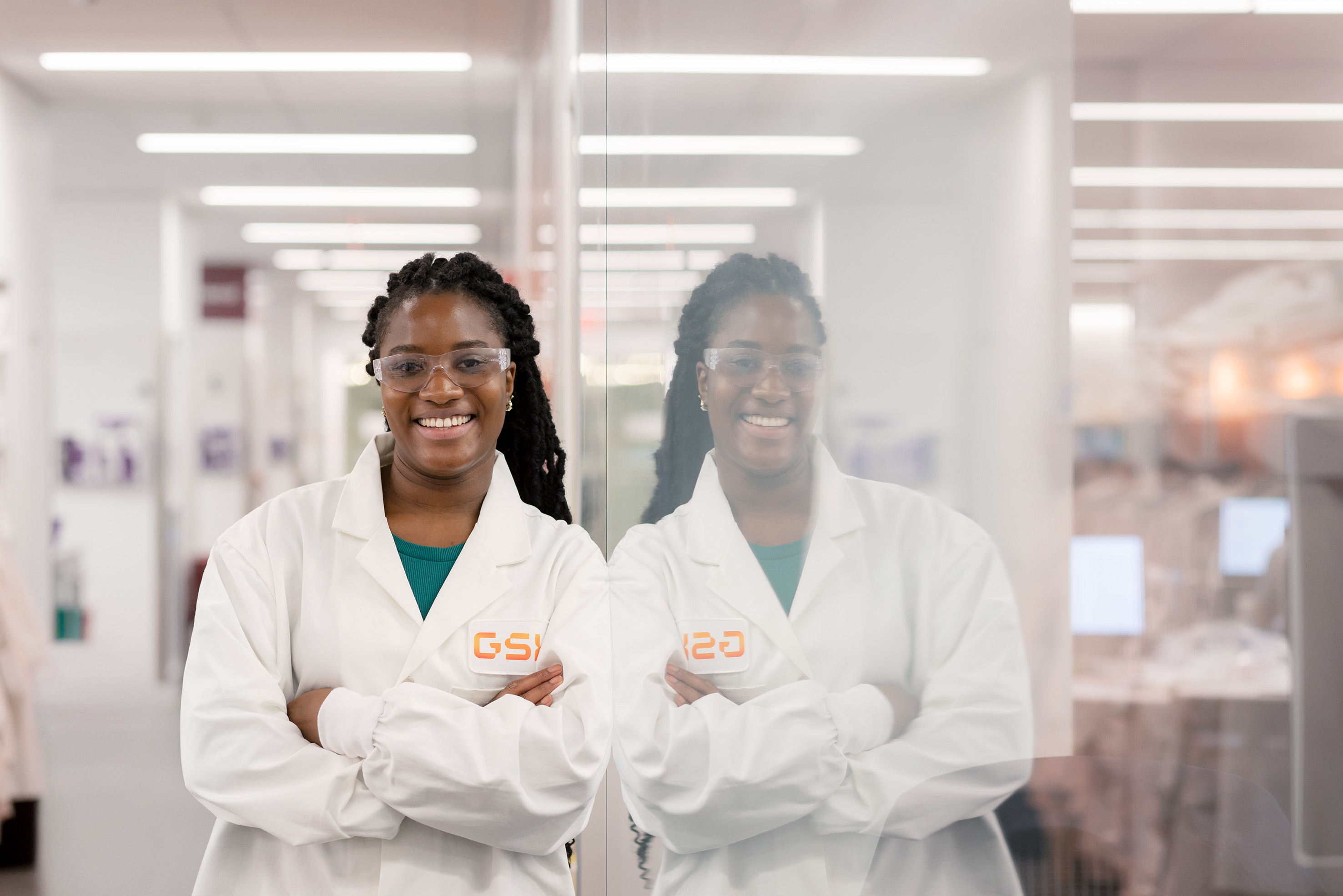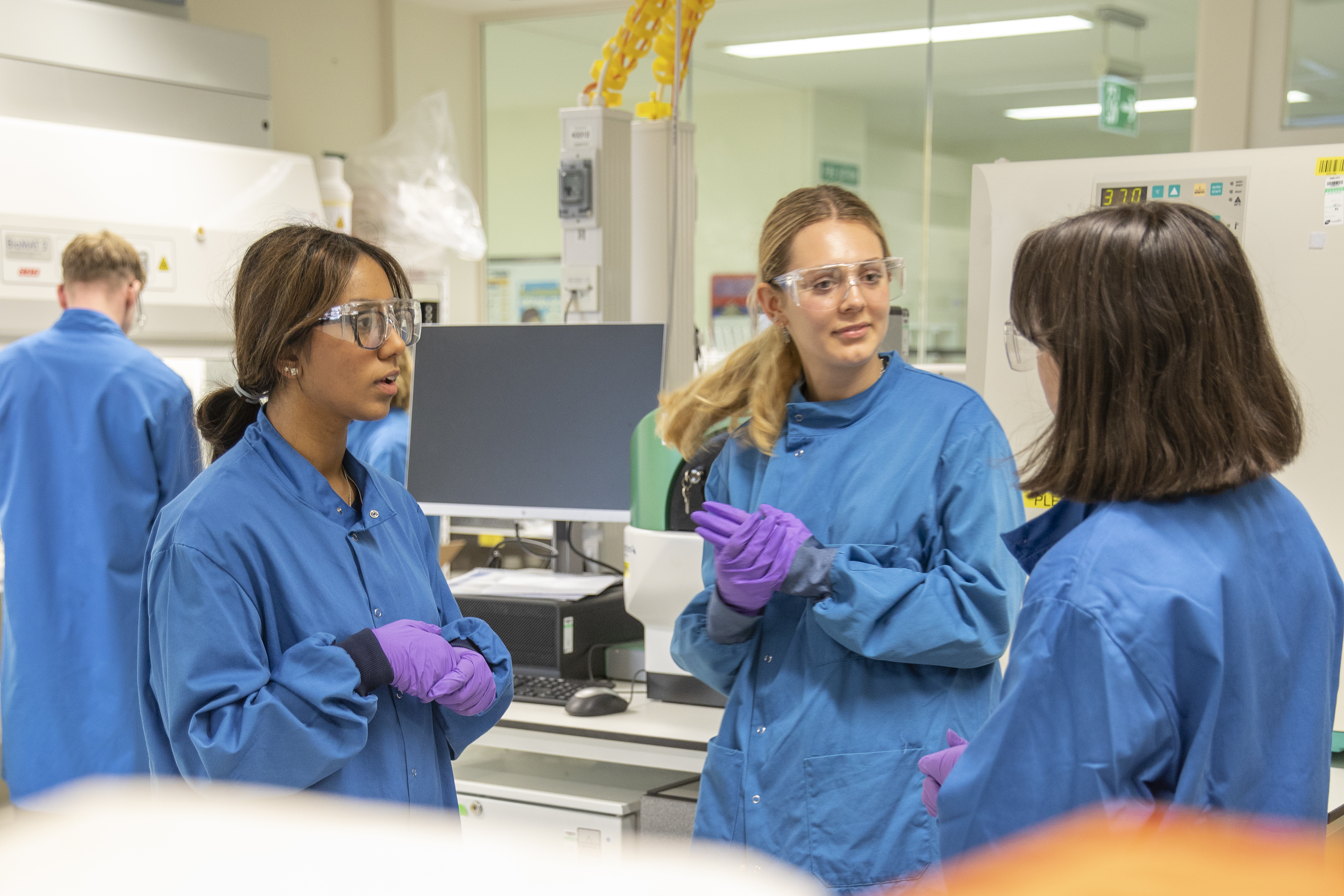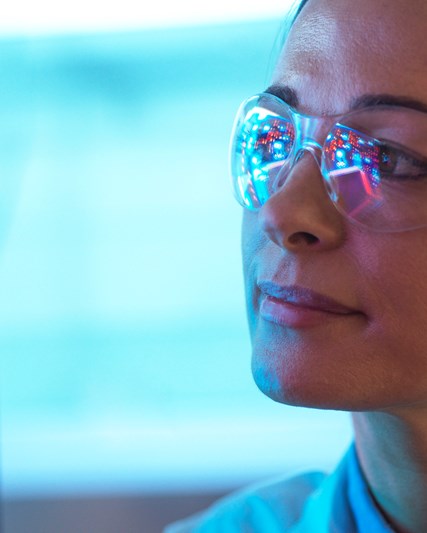Science has a diversity problem. Black people, women, and those from lower socio-economic backgrounds are all under-represented in the scientific workforce – and in medical innovation. To combat this, biotech companies, like GSK, are funding initiatives to ensure the best and brightest individuals have the tools they need to pursue careers in science, technology, engineering and maths (STEM).
Boosting diversity in all its forms has been shown to be good for science – and good for business. Teams composed of people with different perspectives, backgrounds and experiences are better at problem-solving, and companies with more diverse teams and leadership perform better than more homogenous ones.
“All the evidence suggests that diverse teams perform better,” says Clare Griffin, VP, Responsible Business at GSK.
“Science is a field where you need new ways of looking at problems – and diverse teams of people with diverse perspectives are best placed to do this.”
The benefits of science tend to flow to the groups who conduct it. The historical dominance of white men in research has led to inadvertent biases in clinical data and drugs that are less effective in women or people from certain ethnic backgrounds.
"Having a diverse scientific community within our company can better serve and understand the needs of the diverse patients that we're here to provide health solutions for," Griffin adds.
However, there are several socio-economic factors that hold young people back from achieving success in STEM, ultimately limiting the value they could bring to innovation in the future. This is why some companies, like GSK, are focused on helping to reduce barriers faced by women and young girls, people from lower socio-economic backgrounds and Black communities trying to access STEM careers.
Women in STEM
In standardised international tests, girls aged 15 and 16 match or outperform their male peers (PDF - 4.1MB) in science and maths. Yet when those girls reach university age, many opt out of STEM subjects. In the U.S., just a quarter of undergraduate degrees in mathematics, computer science and engineering were awarded to women.
The erosion of women in science becomes more pronounced as they enter the workforce. Female students are less likely to remain in the STEM field than their male counterparts. In the US, women represent around one-third of the STEM workforce, according to the National Science Foundation. In the UK, women make up just over a quarter of those in STEM industries, with the biggest disparities in engineering and computer science.
Social conditioning, a lack of role models and insufficient support from teachers, parents and employers can all cause girls to lose confidence in their ability to do science, says Anne-Marie Imafidon, CEO of Stemettes, an organisation that inspires and connects girls, young women and nonbinary young people with STEM and STEAM (where the A stands for arts) careers and role models.
“It’s a multifaceted problem that requires a multifaceted solution,” she says.
The good news is, there is a growing body of evidence to show these factors can be countered with tools such as mentoring. At the University of Massachusetts, for example, female engineering majors who were assigned a female mentor in their first year were more likely to pursue postgraduate opportunities than those assigned a male mentor, or no mentor.
“We match young people with a trusted advisor to discuss their concerns, ambitions, strengths and weaknesses,” says Imafidon.
Mentors also help mentees apply for roles, awards or other opportunities, often tapping into their own networks for further insights.
“It’s about opening the eyes of young people to know they’ve got options.”
Ethnic diversity
In Britain, the U.S. and many other places, Black and Hispanic people are more likely to drop out of science and engineering degrees than their White and Asian counterparts. Those that do complete their degrees are less likely to stay in the STEM field. That attrition impoverishes science: research papers with greater ethnic diversity among their authors have a higher scientific impact than those produced by more ethnically homogenous groups.
Discrimination, a lack of role models and inadequate encouragement for young Black students are all factors that push them away from STEM.
But there are also proven ways to attract, and keep, Black researchers in science. Participants in the renowned Meyerhoff Scholars Program at the University of Maryland who receive dedicated mentors, study groups and added support were around five times more likely to complete a PhD in a STEM subject than peers with similar abilities.
“You can’t be what you can’t see,” says Lamont Terrell, Diversity, Equity and Inclusion Lead, R&D at GSK.
“If we can increase the number of individuals they see that look like them, it’s more likely they’ll continue in their path.”
Every year, GSK supplies mentors, and provides work experience and sponsorship for students at Historically Black College and Universities and Hispanic-Serving Institutions in the U.S. such as Morehouse School of Medicine and Howard University.
“The impact happens when you couple that financial support with the mentoring,” Dr Terrell adds. “That’s where the magic happens.”
Socioeconomics
Among 11-year-old children in England, just 59% of those from disadvantaged socio-economic backgrounds meet expectations in maths, compared with 79% for other pupils.
At age 16, their uptake and attainment in biology, chemistry and physics is lower. Similar dynamics are evidenced in Australia, the U.S. and many other places. Covid-19 lockdowns and school closures exacerbated those attainment gaps.
This disparity is denying hundreds of thousands of children the opportunity to pursue well-paid careers in STEM, and further exacerbating socio-economic inequalities. It also means that the talents of these children – with their potential to eventually tackle problems in health, climate change, engineering and more – are being wasted.
Small interventions can make a big difference. Research in the UK found that young people who’d encountered employers while at school were more likely to earn more later in life (PDF - 211KB).
Widening the networks of young people to include those from professional backgrounds gives them confidence to pursue careers they would not have otherwise considered.
Untapped potential
Evidence about the benefits of mentoring is already well-stablished – and is backed up by independent research commissioned by GSK in the UK.
The study found that mentoring improves the grades of under-represented high school students, enabling more of them to attend elite, research-oriented universities, and to earn higher figure incomes when they graduate.
GSK is investing £6m in the UK over the next ten years to help reduce the barriers to entry in STEM careers faced by women and young girls, people from lower socio-economic backgrounds and Black communities.
This figure is on top of GSK’s 10-year $10 million commitment to increase the number of Black, Latinx and women Philadelphians entering STEM careers by 2030.
The aim: to inspire and support the next generation of diverse innovators and unlock untapped talent so scientific teams are better equipped to push forward meaningful innovations.
“GSK has spent many years investing in science programmes that reach young people, but we are now focussing on high impact mentoring programmes that inspire young people from under-represented groups to stay with STEM subjects, and support them to continue into a STEM career,” Griffin says.
To do this, GSK is partnering with several mentoring organisations, including STEM Learning; Stemettes; Covent Garden Dragon Hall Trust; the Association for Black and Minority Ethnic Engineers and Spark!, where high quality one-to-one relationships are developed with young people and skilled mentors who share tools and guidance to help personal and professional development.
“We ultimately believe that we can’t discover and develop the ground-breaking medicines and vaccines that the world needs unless we’ve got the best talent,” Griffin concludes.
“And that means getting highly talented individuals with a wide range of skills and backgrounds.”





